 Search by Keyword
|
"THE INNER LIGHT"
(George Harrison)
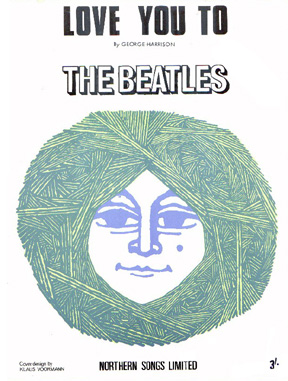 George Harrison will forever be known as the band member who infused Indian music into the catalog of The Beatles, thereby helping to spread its influence throughout the world. However, apart from him playing sitar, tamboura or surmandal on a few songs, such as "Norwegian Wood," "Tomorrow Never Knows" and "Lucy In The Sky With Diamonds," there were actually only a trio of songs that George brought into The Beatles containing full Indian instrumentation. These were "Love You To," "Within You Without You" and finally, "The Inner Light." George Harrison will forever be known as the band member who infused Indian music into the catalog of The Beatles, thereby helping to spread its influence throughout the world. However, apart from him playing sitar, tamboura or surmandal on a few songs, such as "Norwegian Wood," "Tomorrow Never Knows" and "Lucy In The Sky With Diamonds," there were actually only a trio of songs that George brought into The Beatles containing full Indian instrumentation. These were "Love You To," "Within You Without You" and finally, "The Inner Light."
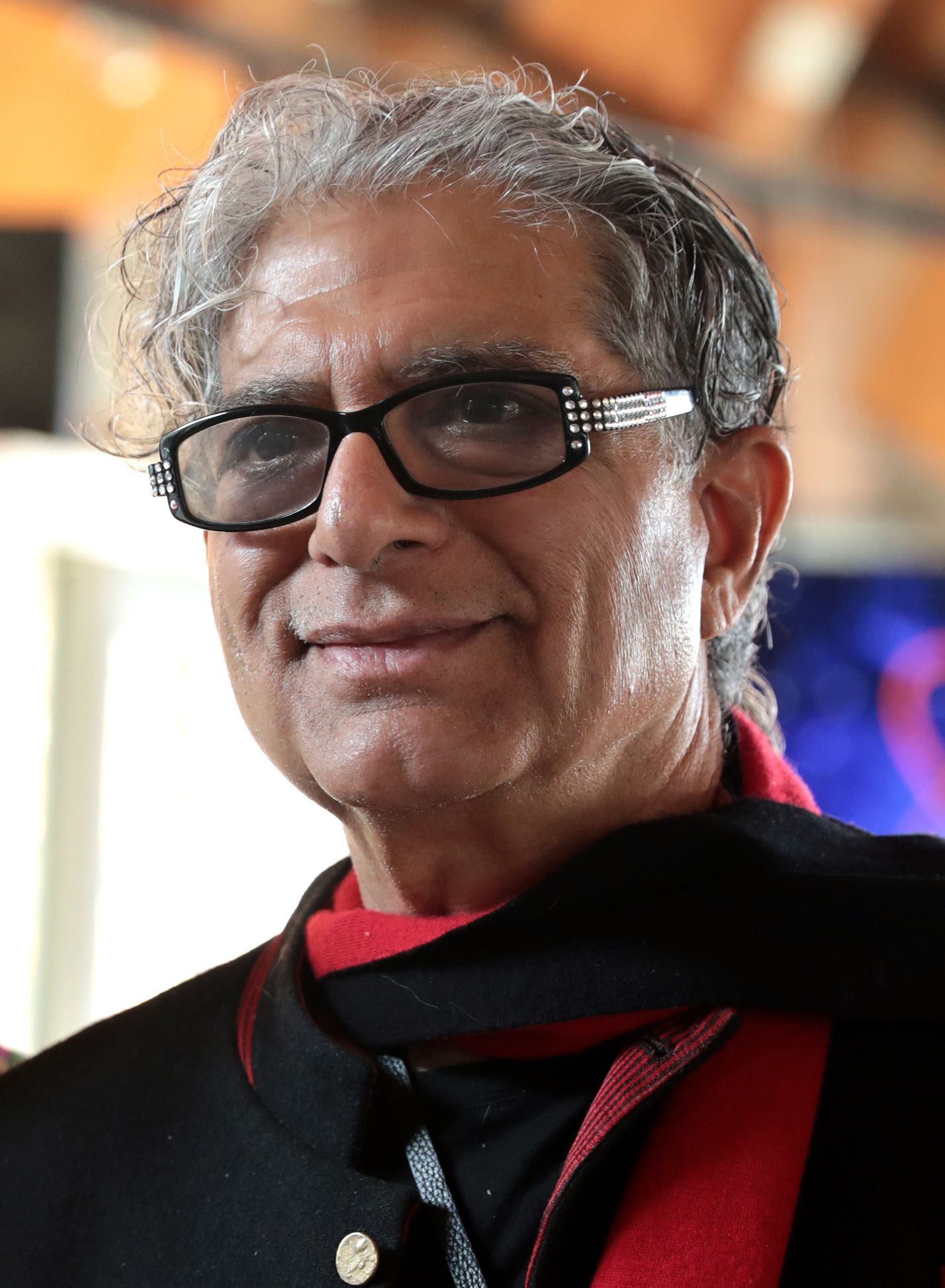 George has also been credited, by none other than spiritual author and personal friend Deepak Chopra, with having single-handedly brought Eastern religious beliefs into the Western world through his music. While these beliefs can be heard lyrically in more conventionally recorded Harrisongs such as “While My Guitar Gently Weeps,” “Long, Long, Long” and “Old Brown Shoe,” as well as a good portion of his post Beatles output, one of the most obvious examples is “The Inner Light.” He may have abandoned Indian instrumentation on his Beatles compositions after this song was recorded, but it stands as the most Eastern-influenced Beatles song in their catalog. It was recorded in India, contained only Indian musicians, and its lyrics were derived entirely from a highly respected ancient Eastern manuscript. George has also been credited, by none other than spiritual author and personal friend Deepak Chopra, with having single-handedly brought Eastern religious beliefs into the Western world through his music. While these beliefs can be heard lyrically in more conventionally recorded Harrisongs such as “While My Guitar Gently Weeps,” “Long, Long, Long” and “Old Brown Shoe,” as well as a good portion of his post Beatles output, one of the most obvious examples is “The Inner Light.” He may have abandoned Indian instrumentation on his Beatles compositions after this song was recorded, but it stands as the most Eastern-influenced Beatles song in their catalog. It was recorded in India, contained only Indian musicians, and its lyrics were derived entirely from a highly respected ancient Eastern manuscript.
Songwriting History
On September 29th, 1967, George Harrison and John Lennon made an appearance at Wembley Studios in Wembley, North London, for a taped interview with David Frost before a live audience for that evening's British Televisoin show "The Frost Programme." The subject matter of this interview was Transcendental Meditation, George and John appearing in the second half of the program following an interview with Maharishi Mahesh Yogi taped earlier in the day.
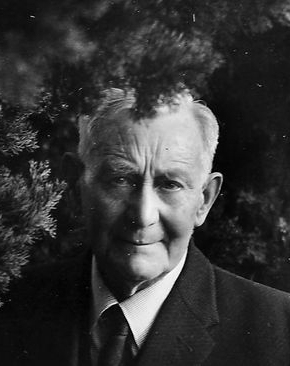 The response to this program was so strong that they were asked to appear on the very next episode of this program five days later, October 4th, 1967. George and John were interviewed for this entire episode, which included questions from prominent intellectuals, either for or against TM, who were sitting in the front row. Among these guests was Spanish translator and scholar Juan Mascaro, who interacted with George personally after the show. The response to this program was so strong that they were asked to appear on the very next episode of this program five days later, October 4th, 1967. George and John were interviewed for this entire episode, which included questions from prominent intellectuals, either for or against TM, who were sitting in the front row. Among these guests was Spanish translator and scholar Juan Mascaro, who interacted with George personally after the show.
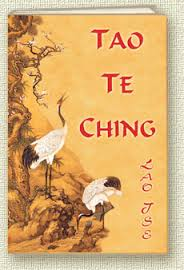 George relates: "Following John and I's appearance on 'The Frost Programme,' the Sanskrit scholar Juan Mascaro, who was present in the audience, wrote a complimentary letter to me prasing 'Within You Without You.'" Juan's letter stated: "It is a moving song. May it move the souls of millions." George continues: "He also sent me a book called 'Lamps Of Fire,' suggesting that I wrote a song with the words of “Tao Te Ching.' The words of 'The Inner Light' came from that book, page 66, 48a.” George relates: "Following John and I's appearance on 'The Frost Programme,' the Sanskrit scholar Juan Mascaro, who was present in the audience, wrote a complimentary letter to me prasing 'Within You Without You.'" Juan's letter stated: "It is a moving song. May it move the souls of millions." George continues: "He also sent me a book called 'Lamps Of Fire,' suggesting that I wrote a song with the words of “Tao Te Ching.' The words of 'The Inner Light' came from that book, page 66, 48a.”
The “Tao Te Ching,” translated as “The Great Way,” was said to have been written by Lao Tzu circa 400 BC and is claimed by many as being one of the most insightful pieces of literature ever written. The 47th verse of this 81 verse writing states as follows:
“Without going out the door, know the world.
Without looking out the window, you may see the ways of heaven.
The farther one goes, the less one knows.
Therefore the sage does not venture forth and yet knows,
does not look and yet names,
does not strive and yet attains completion.”
(Translation from Dr. Wayne W. Dyer's book “Change Your Thoughts – Change Your Life.”)
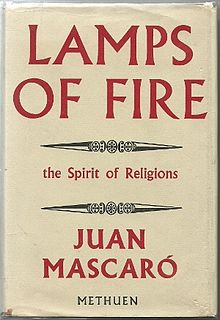 "Lamps Of Fire - The Spirit Of Religions," was a book first published in 1958 that contains a compilation of religious writings put together, and sometimes translated, by scholar Juan Mascaro. In mid-November of 1967, Mascaro sent a copy of this book to George with a note suggesting that it might "be interesting to put into your music a few words of Tao," then indicating selection 48 in his book which contains the above mentioned 47th verse of the "Tao Te Ching." George decided to do just that, even using Mascaro's chapter title "The Inner Light" as his song's title. "Lamps Of Fire - The Spirit Of Religions," was a book first published in 1958 that contains a compilation of religious writings put together, and sometimes translated, by scholar Juan Mascaro. In mid-November of 1967, Mascaro sent a copy of this book to George with a note suggesting that it might "be interesting to put into your music a few words of Tao," then indicating selection 48 in his book which contains the above mentioned 47th verse of the "Tao Te Ching." George decided to do just that, even using Mascaro's chapter title "The Inner Light" as his song's title.
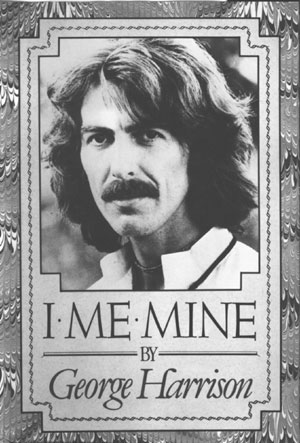 In his book "I Me Mine," George explains some minor lyrical changes he made to Juan Mascaro's translation of the text. "In the original poem, the verse says 'Without going out of my door, I can know all things on earth...' And so to prevent any misinterpretations - and also to make the song a bit longer - I did repeat that as a second verse, but made it "Without going out of your door, you can know all things on earth...' The song was written expecially for Juan Mascaro, because he sent me the book and is a sweet old man.". In his book "I Me Mine," George explains some minor lyrical changes he made to Juan Mascaro's translation of the text. "In the original poem, the verse says 'Without going out of my door, I can know all things on earth...' And so to prevent any misinterpretations - and also to make the song a bit longer - I did repeat that as a second verse, but made it "Without going out of your door, you can know all things on earth...' The song was written expecially for Juan Mascaro, because he sent me the book and is a sweet old man.".
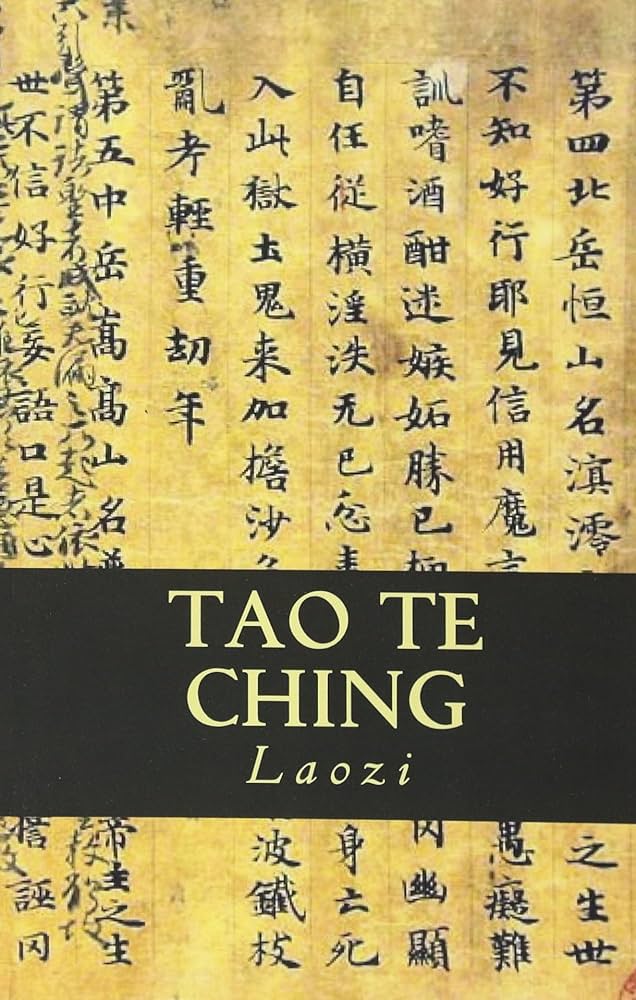 Although there is much room for interpretation of this ancient spiritual text from the Tao Te Ching, it's generally agreed that these lyrics depict how we don't need our physical senses nor any physical action on our part to experience true knowledge or enlightenment. Through our raised consciousnesses, "we can know all things on earth" without traveling anywhere. In fact, "the farther one travels, the less one knows." But "we can know the ways of heaven" through meditative reflection, not needing to physically use the eyes to peer even "out of your door." Anything of real value in our life experience can be attained from within, hence "do all without doing." Although there is much room for interpretation of this ancient spiritual text from the Tao Te Ching, it's generally agreed that these lyrics depict how we don't need our physical senses nor any physical action on our part to experience true knowledge or enlightenment. Through our raised consciousnesses, "we can know all things on earth" without traveling anywhere. In fact, "the farther one travels, the less one knows." But "we can know the ways of heaven" through meditative reflection, not needing to physically use the eyes to peer even "out of your door." Anything of real value in our life experience can be attained from within, hence "do all without doing."
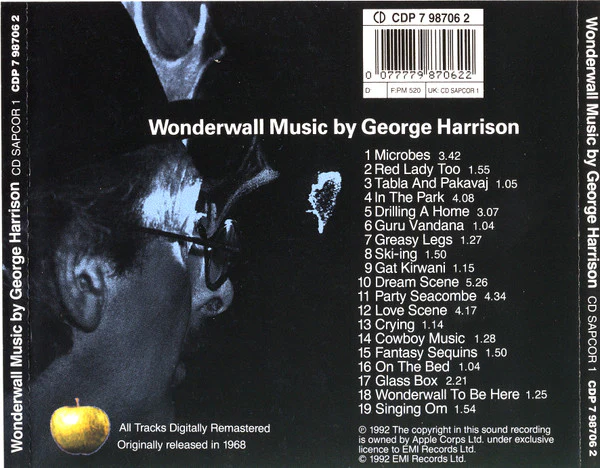 It can easily be deduced that the song was written in its entirety by January 12th, 1968. This can be said with confidence because of an interesting recording of the backing track, released on the 2014 remastered version of George's “Wonderwall Music” album, that catches George encouraging the studio musicians to play in conjunction with the already written lyrics. George is heard instructing them with the words, “because the singing goes...” and then demonstrates the notes of the melody line that he had already written. Therefore, the song appears to have been written sometime between November 1967 and January 12th, 1968. It can easily be deduced that the song was written in its entirety by January 12th, 1968. This can be said with confidence because of an interesting recording of the backing track, released on the 2014 remastered version of George's “Wonderwall Music” album, that catches George encouraging the studio musicians to play in conjunction with the already written lyrics. George is heard instructing them with the words, “because the singing goes...” and then demonstrates the notes of the melody line that he had already written. Therefore, the song appears to have been written sometime between November 1967 and January 12th, 1968.
Recording History
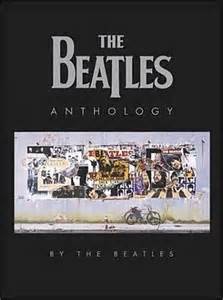 "In January 1968, I was in Bombay (India) working on the soundtrack for the film 'Wonderwall' - a '60s hippy movie directed by Joe Massot," George Harrison relates in the book "Beatles Anthology." He continues, "He asked me if I would do the music, but I told him I didn't write music for films. Then he said that whatever I gave him, he would use. That sounded pretty simple, and I thought, 'I'll give them an Indian music anthology, and who knows, maybe a few hippies will get turned on to Indian Music.'" "In January 1968, I was in Bombay (India) working on the soundtrack for the film 'Wonderwall' - a '60s hippy movie directed by Joe Massot," George Harrison relates in the book "Beatles Anthology." He continues, "He asked me if I would do the music, but I told him I didn't write music for films. Then he said that whatever I gave him, he would use. That sounded pretty simple, and I thought, 'I'll give them an Indian music anthology, and who knows, maybe a few hippies will get turned on to Indian Music.'"
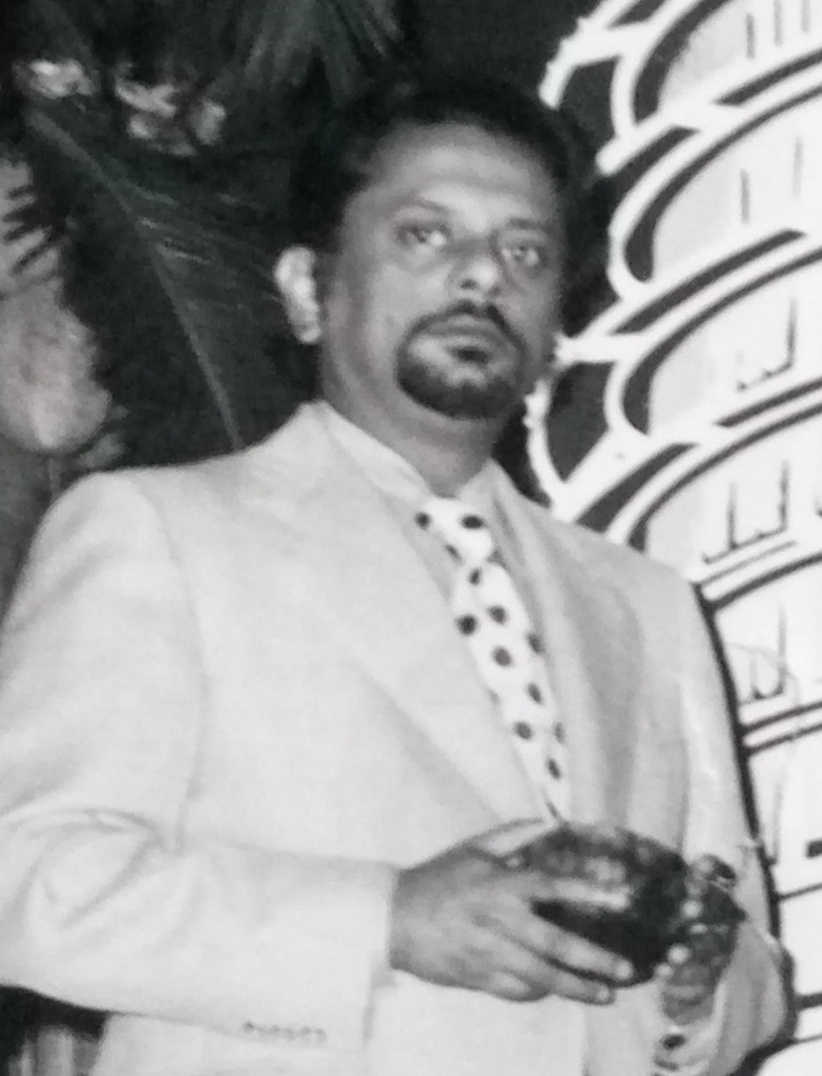 George started recording the soundtrack for this movie using conventional instrumentation in EMI Studio Two on January 5th, 1968, but flew to India on January 7th for a five days of recording sessions at EMI's Bombay Studio. “I worked with Indian musicians at the EMI/HMV studios in Bombay,” George continues. “Mr. Bhaskar Menon brought a two-track stereo machine all the way from Calcutta on the train for me, because all they had in Bombay was a mono machine.” George started recording the soundtrack for this movie using conventional instrumentation in EMI Studio Two on January 5th, 1968, but flew to India on January 7th for a five days of recording sessions at EMI's Bombay Studio. “I worked with Indian musicians at the EMI/HMV studios in Bombay,” George continues. “Mr. Bhaskar Menon brought a two-track stereo machine all the way from Calcutta on the train for me, because all they had in Bombay was a mono machine.”
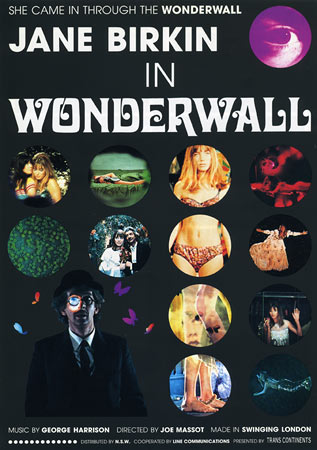 The five days that George had booked for recording in India were January 9th through 13th, 1968. Each of these sessions ran from 10 am to 7 pm. On January 12th, the “Wonderwall” project was just about complete but he didn't want to waste the studio time for that day or the next. He thereby decided to utilize the Indian session musicians that he recruited and record a selection of ragas (traditional Hindu musical pieces) for possible use on Beatles recordings. One in particular that he had in mind was what became known as “The Inner Light,” although it was simply referred to as “Untitled” on the documentation for that day. The five days that George had booked for recording in India were January 9th through 13th, 1968. Each of these sessions ran from 10 am to 7 pm. On January 12th, the “Wonderwall” project was just about complete but he didn't want to waste the studio time for that day or the next. He thereby decided to utilize the Indian session musicians that he recruited and record a selection of ragas (traditional Hindu musical pieces) for possible use on Beatles recordings. One in particular that he had in mind was what became known as “The Inner Light,” although it was simply referred to as “Untitled” on the documentation for that day.
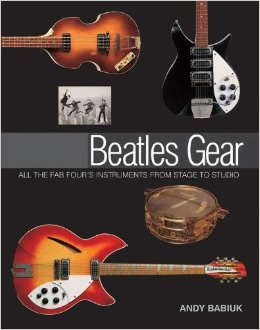 Five takes of the song were recorded, documentation showing "take five" being the keeper. All of the instrumentation for the song was recorded on this day, vocals to be added in at a later date back in London. According to Andy Babiuk's book “Beatles Gear,” the instruments used on “The Inner Light” comprise the following: “Harmonium and flutes and sitars, plus a plethora of Indian instruments including dholak and pakhavaj (double-headed drums), shehnai (conical oboe), santur (box zither), sarod (a lute-like instrument with double soundbox), surbahar (bass sitar), tabla (pair of hand-drums), and tar sahnai (a fiddle with an amplifying horn).” Five takes of the song were recorded, documentation showing "take five" being the keeper. All of the instrumentation for the song was recorded on this day, vocals to be added in at a later date back in London. According to Andy Babiuk's book “Beatles Gear,” the instruments used on “The Inner Light” comprise the following: “Harmonium and flutes and sitars, plus a plethora of Indian instruments including dholak and pakhavaj (double-headed drums), shehnai (conical oboe), santur (box zither), sarod (a lute-like instrument with double soundbox), surbahar (bass sitar), tabla (pair of hand-drums), and tar sahnai (a fiddle with an amplifying horn).”
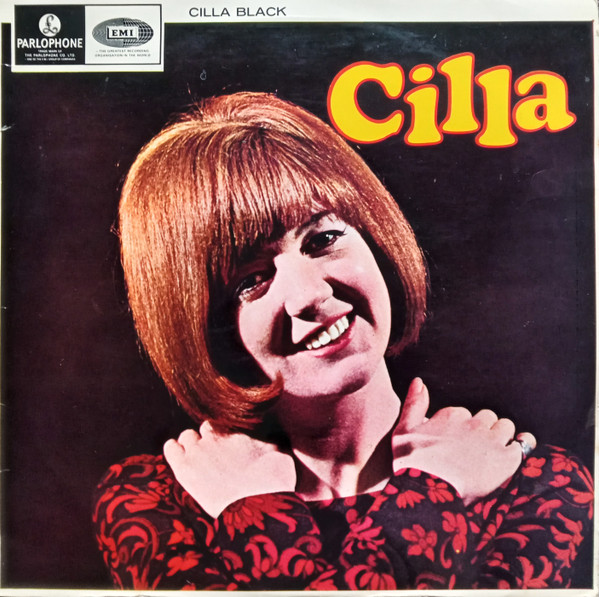 Back at EMI Studios in London on February 6th, 1968, The Beatles turned their attention to completing what was now titled “The Inner Light” by adding George's vocals. The Beatles minus Ringo (who was busy rehearsing and then appearing as a guest on Cilla Black's television show “Cilla” that evening) entered EMI Studio One at 2:30 pm with the intention of completing the song. A tape copy of the originally recorded music from Bombay needed to be done first, documentation showing the two-track tape containing “take five” being copied onto a four-track tape to open up two extra tracks for recording vocal overdubs. They now called this "take six." Back at EMI Studios in London on February 6th, 1968, The Beatles turned their attention to completing what was now titled “The Inner Light” by adding George's vocals. The Beatles minus Ringo (who was busy rehearsing and then appearing as a guest on Cilla Black's television show “Cilla” that evening) entered EMI Studio One at 2:30 pm with the intention of completing the song. A tape copy of the originally recorded music from Bombay needed to be done first, documentation showing the two-track tape containing “take five” being copied onto a four-track tape to open up two extra tracks for recording vocal overdubs. They now called this "take six."
Tape operator Jerry Boys remembers the reluctance of George Harrison to perform his vocal part for the song. “George had this big thing about not wanting to sing it because he didn't feel confident that he could do the song justice. I remember Paul saying 'You must have a go, don't worry about it, it's good.'”
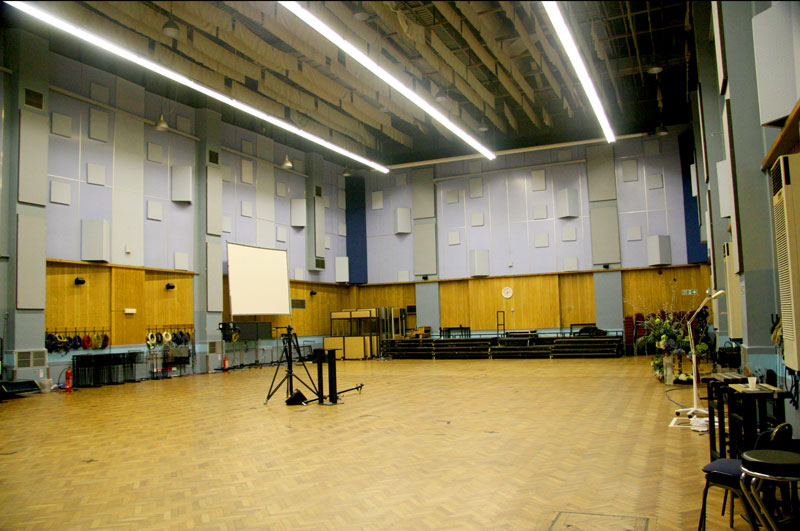 Engineer Geoff Emerick concurs and, in his book “Here, There And Everywhere,” adds his recollections. “Abbey Road's Studio One was a cold, cavernous place even on the sunniest summer day. In the dead of winter, it was like a cross between a meat locker and an airplane hangar. But that's where I found myself on a frigid February afternoon, working with George Martin and three of the Beatles...We would be working on George Harrison's Indian-influenced song 'The Inner Light' that day...Mal Evans lit some candles and incense to create a vibe for George...Harrison, in particular, was quite nervous about doing his lead vocal. He felt that he couldn't do the song justice, but with encouragement from Paul, he actually did a good job of it. John had little to say that day – I had the impression he wasn't too keen on the song – but he and Paul stayed on anyway, alternating between the control room and the studio, where they would sit behind George, perched up on high stools, the lights turned down low.” Engineer Geoff Emerick concurs and, in his book “Here, There And Everywhere,” adds his recollections. “Abbey Road's Studio One was a cold, cavernous place even on the sunniest summer day. In the dead of winter, it was like a cross between a meat locker and an airplane hangar. But that's where I found myself on a frigid February afternoon, working with George Martin and three of the Beatles...We would be working on George Harrison's Indian-influenced song 'The Inner Light' that day...Mal Evans lit some candles and incense to create a vibe for George...Harrison, in particular, was quite nervous about doing his lead vocal. He felt that he couldn't do the song justice, but with encouragement from Paul, he actually did a good job of it. John had little to say that day – I had the impression he wasn't too keen on the song – but he and Paul stayed on anyway, alternating between the control room and the studio, where they would sit behind George, perched up on high stools, the lights turned down low.”
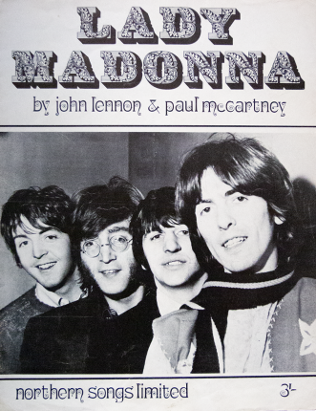 Just before the 8 pm mark, when they brought in a television to watch Ringo on live TV, the first mono mix of what was thought to be the completed song was done by the engineering team of George Martin, Geoff Emerick and Jerry Boys. A second recording session followed after the television show was over, the group adding overdubs to the previously recorded McCartney song “Lady Madonna.” They all left for the night around 2 am the following morning. Just before the 8 pm mark, when they brought in a television to watch Ringo on live TV, the first mono mix of what was thought to be the completed song was done by the engineering team of George Martin, Geoff Emerick and Jerry Boys. A second recording session followed after the television show was over, the group adding overdubs to the previously recorded McCartney song “Lady Madonna.” They all left for the night around 2 am the following morning.
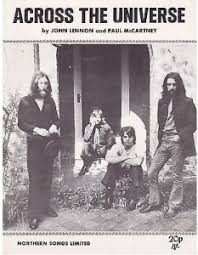 On February 8th, 1968, it was decided that one finishing touch needed to be added to “The Inner Light.” The Beatles entered EMI Studio Two at about 2:30 pm with the first thing on the agenda being adding a very brief harmony vocal overdub by John and Paul toward the end of the song on the lyric “do all without doing” as well as George double-tracking his vocals on the line "arrive without traveling." This was undoubtedly completed rather quickly, followed by another mono mix being created by the engineering team of George Martin, Geoff Emerick, Ken Scott and Richard Lush. A decision was made that an earlier take of the instrumental first verse, as recorded in Bombay, sounded better. Therefore, the engineering team first edited together this better sounding first verse from what possibly was "take four" onto the newly created "take six" just before George's vocals kick in. Three attempts at a mono mix were made at this point, numbered 2 through 4, the final one becoming the finished mono master. Starting around 4:30 pm, more work was then done on the previously recorded Lennon composition “Across The Universe.” On February 8th, 1968, it was decided that one finishing touch needed to be added to “The Inner Light.” The Beatles entered EMI Studio Two at about 2:30 pm with the first thing on the agenda being adding a very brief harmony vocal overdub by John and Paul toward the end of the song on the lyric “do all without doing” as well as George double-tracking his vocals on the line "arrive without traveling." This was undoubtedly completed rather quickly, followed by another mono mix being created by the engineering team of George Martin, Geoff Emerick, Ken Scott and Richard Lush. A decision was made that an earlier take of the instrumental first verse, as recorded in Bombay, sounded better. Therefore, the engineering team first edited together this better sounding first verse from what possibly was "take four" onto the newly created "take six" just before George's vocals kick in. Three attempts at a mono mix were made at this point, numbered 2 through 4, the final one becoming the finished mono master. Starting around 4:30 pm, more work was then done on the previously recorded Lennon composition “Across The Universe.”
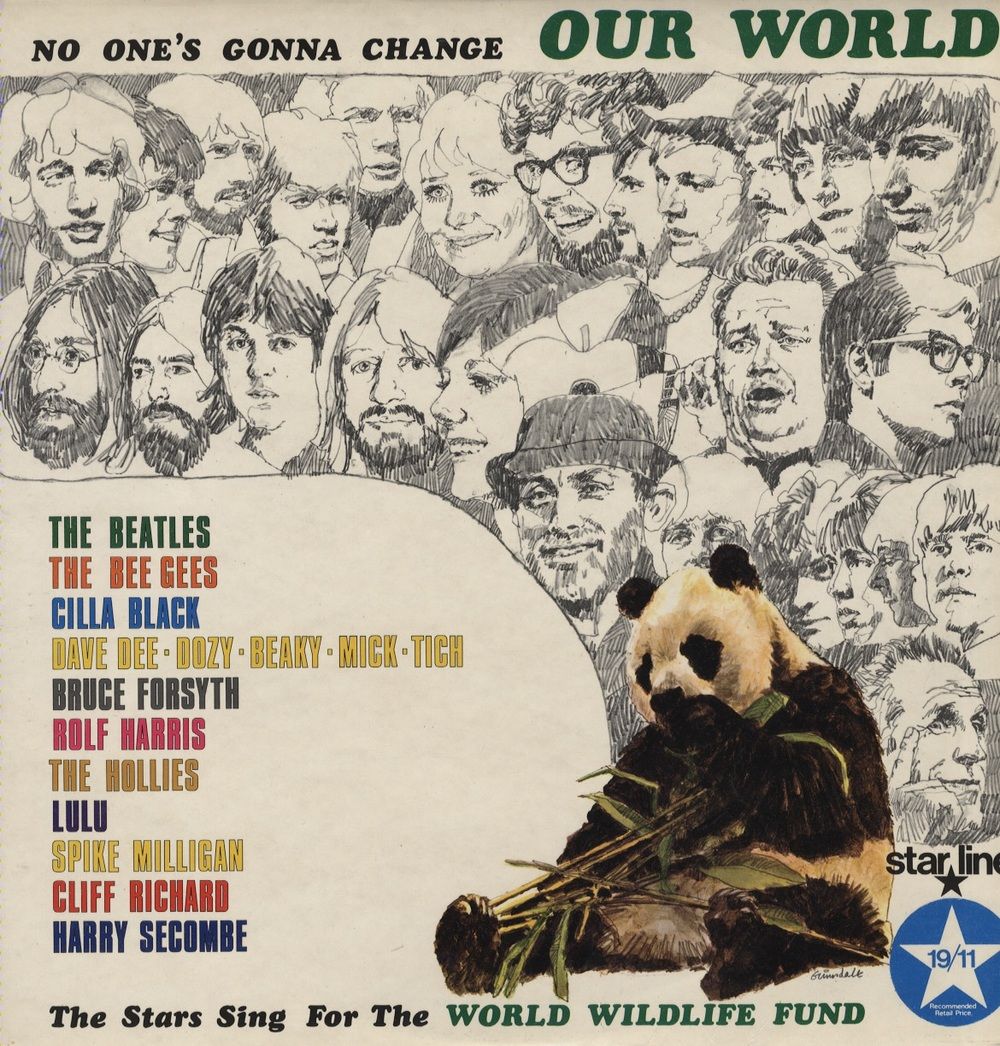 Interestingly, it was decided sometime during the remainder of this session that “Across The Universe” was to be shelved because it didn't meet with John's satisfaction. It was given away for use on a charity album called “No One's Gonna Change Our World,” which was conceived by comedian Spike Milligan who happened to be in attendance at this recording session. With this decided, George's “The Inner Light” was earmarked to be the b-side of their next single “Lady Madonna.” By 12:15 am the following morning, the recording session was complete. Interestingly, it was decided sometime during the remainder of this session that “Across The Universe” was to be shelved because it didn't meet with John's satisfaction. It was given away for use on a charity album called “No One's Gonna Change Our World,” which was conceived by comedian Spike Milligan who happened to be in attendance at this recording session. With this decided, George's “The Inner Light” was earmarked to be the b-side of their next single “Lady Madonna.” By 12:15 am the following morning, the recording session was complete.
 Since “The Inner Light” was only destined to be on a single at the time, and was even overlooked to be a part of the compilation album “Hey Jude,” no stereo mix was needed any time soon since Beatles singles were only printed in mono up to that point. But for some reason, on January 27th, 1970, Geoff Emerick (acting as producer), along with engineers Peter Bown, Jeff Jarratt and John Barnett, entered the control room of EMI Studio Two to create a stereo mix of the song. It took them an hour and a half to make the one attempt needed to create a suitable stereo mix, from 10 to 11:30 pm. This engineering team, however, did not go to the effort of editing in the better sounding first instrumental verse, so the full "take six" as originally performed is contained on this stereo mix. As the need arose in upcoming years, this stereo mix was dusted off and used on later compilation releases. Since “The Inner Light” was only destined to be on a single at the time, and was even overlooked to be a part of the compilation album “Hey Jude,” no stereo mix was needed any time soon since Beatles singles were only printed in mono up to that point. But for some reason, on January 27th, 1970, Geoff Emerick (acting as producer), along with engineers Peter Bown, Jeff Jarratt and John Barnett, entered the control room of EMI Studio Two to create a stereo mix of the song. It took them an hour and a half to make the one attempt needed to create a suitable stereo mix, from 10 to 11:30 pm. This engineering team, however, did not go to the effort of editing in the better sounding first instrumental verse, so the full "take six" as originally performed is contained on this stereo mix. As the need arose in upcoming years, this stereo mix was dusted off and used on later compilation releases.
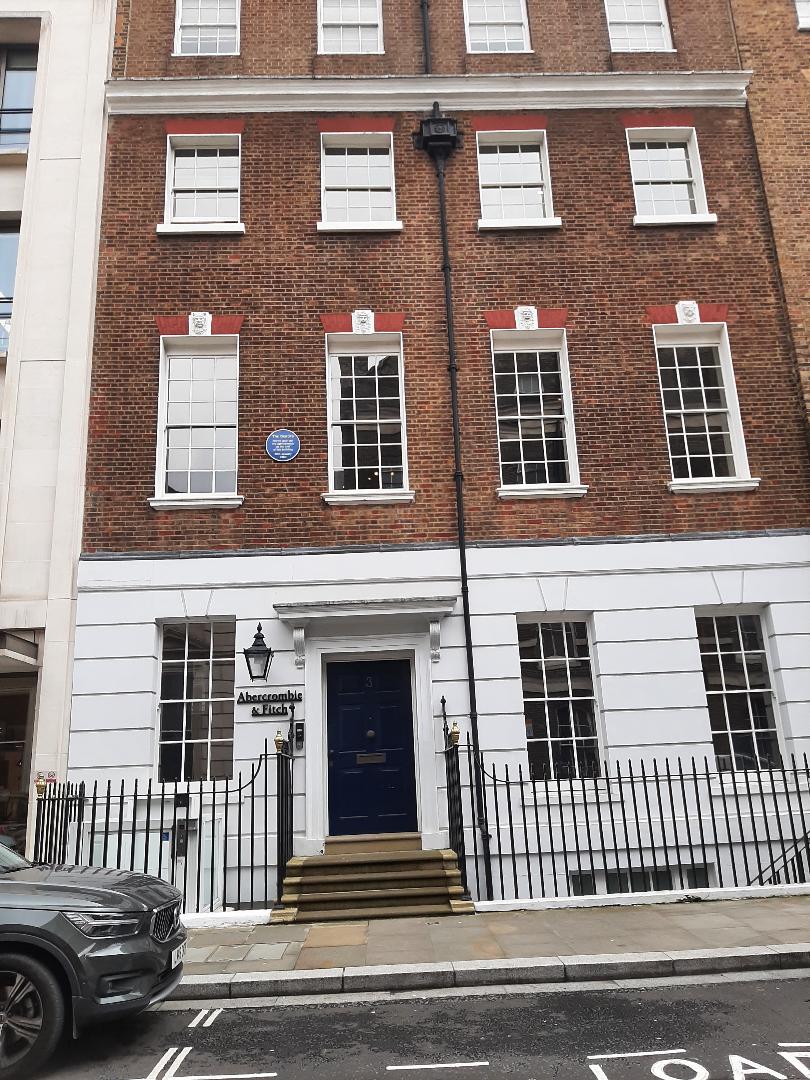 The Beatles did actually touch on "The Inner Light" briefly one additional time in the studio. On the seventeenth day of rehearsals for the "Get Back / Let It Be" project, which was on January 28th, 1969 at Apple Studios in London, the group delved back into their back catalog and ran through a few numbers, including "Love Me Do" and, surprisingly, "The Inner Light." This impromptu version lasted less than a minute and never saw official release anywhere. The Beatles did actually touch on "The Inner Light" briefly one additional time in the studio. On the seventeenth day of rehearsals for the "Get Back / Let It Be" project, which was on January 28th, 1969 at Apple Studios in London, the group delved back into their back catalog and ran through a few numbers, including "Love Me Do" and, surprisingly, "The Inner Light." This impromptu version lasted less than a minute and never saw official release anywhere.
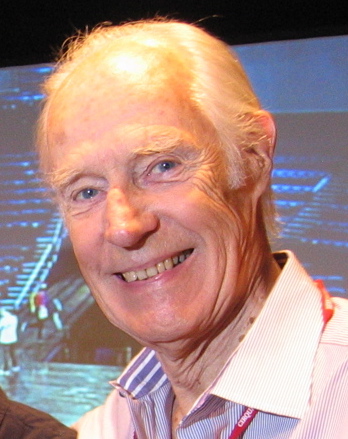 Then, sometime between 2004 and 2006, George Martin and his son Giles Martin returned to the master tapes of “The Inner Light” for inclusion on a track for the soundtrack to the Cirque du Soliel production “Love,” which was put together using all newly mixed versions and mash-ups of Beatles music. The track it is included in is called “Here Comes The Sun (with 'The Inner Light' transition),” which features a small snippet of the final moments of “The Inner Light” at the track's conclusion. Then, sometime between 2004 and 2006, George Martin and his son Giles Martin returned to the master tapes of “The Inner Light” for inclusion on a track for the soundtrack to the Cirque du Soliel production “Love,” which was put together using all newly mixed versions and mash-ups of Beatles music. The track it is included in is called “Here Comes The Sun (with 'The Inner Light' transition),” which features a small snippet of the final moments of “The Inner Light” at the track's conclusion.
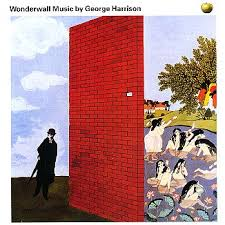 Also, as mentioned above, the instrumental take of the song as recorded in Bombay on January 12th, 1968, that features the first instrumental verse as heard on the mono mix (possible "take four") was mixed sometime in 2014 for inclusion as a bonus track on the remastered compact disc release of George's “Wonderwall Music” album. The track begins with George's instructions to the Indian musicians as to how the song should be played, which makes for a very interesting listen Also, as mentioned above, the instrumental take of the song as recorded in Bombay on January 12th, 1968, that features the first instrumental verse as heard on the mono mix (possible "take four") was mixed sometime in 2014 for inclusion as a bonus track on the remastered compact disc release of George's “Wonderwall Music” album. The track begins with George's instructions to the Indian musicians as to how the song should be played, which makes for a very interesting listen
 Then, sometime in 2018, Giles Martin created a new stereo mix of the instrumental backing track of the song for inclusion in the "'White Album' 50th Anniversary Super Deluxe Box Set." This new mix was made from the tape copy created on February 6th, 1968, that transferred the instrumental two-track tape made of "take five" onto the four-track tape to allow for vocal overdubs, which was then called "take six." After Geoff Emerick verbally documents the tape copy that was being made, we hear the original instrumental backing as produced by George Harrison with a vibrancy never before available. Then, sometime in 2018, Giles Martin created a new stereo mix of the instrumental backing track of the song for inclusion in the "'White Album' 50th Anniversary Super Deluxe Box Set." This new mix was made from the tape copy created on February 6th, 1968, that transferred the instrumental two-track tape made of "take five" onto the four-track tape to allow for vocal overdubs, which was then called "take six." After Geoff Emerick verbally documents the tape copy that was being made, we hear the original instrumental backing as produced by George Harrison with a vibrancy never before available.
Song Structure and Style
The structure of the song is quite simple, namely, 'verse/ chorus/ verse/ chorus/ verse' (or ababa). The first two verses are instrumental while the final verse has vocals. Both choruses are relatively identical and have vocals. A brief two measure introduction starts things off, which consists of a faded-in harmonium drone and then a sitar.
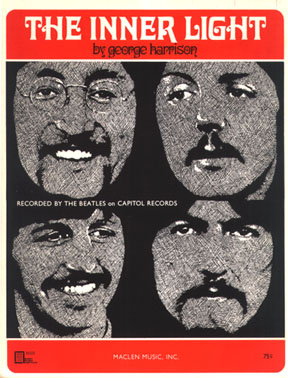 The first instrumental verse is ten measures long and consists of the drone of the harmonium in the background with the tar shehnai playing a lead melody line for measures one and two with a simple single note sitar pattern playing in the background. The sitar then plays an interesting twice-descending melodic phrase in the foreground on measures three and four while the tar shehnai takes a break. All the while, the percussive sounds of the pakhavaj, tabla and santur keep the beat. Measures five through eight display both the tar shehnai and the sitar playing an intricate melody line in unison until the percussive instruments fade away by the ninth measure. The ninth and tenth measures, then, consist of the final ringing note of the tar shehnai and sitar with the drone of the harmonium acting as a segue into the first chorus that follows. The first instrumental verse is ten measures long and consists of the drone of the harmonium in the background with the tar shehnai playing a lead melody line for measures one and two with a simple single note sitar pattern playing in the background. The sitar then plays an interesting twice-descending melodic phrase in the foreground on measures three and four while the tar shehnai takes a break. All the while, the percussive sounds of the pakhavaj, tabla and santur keep the beat. Measures five through eight display both the tar shehnai and the sitar playing an intricate melody line in unison until the percussive instruments fade away by the ninth measure. The ninth and tenth measures, then, consist of the final ringing note of the tar shehnai and sitar with the drone of the harmonium acting as a segue into the first chorus that follows.
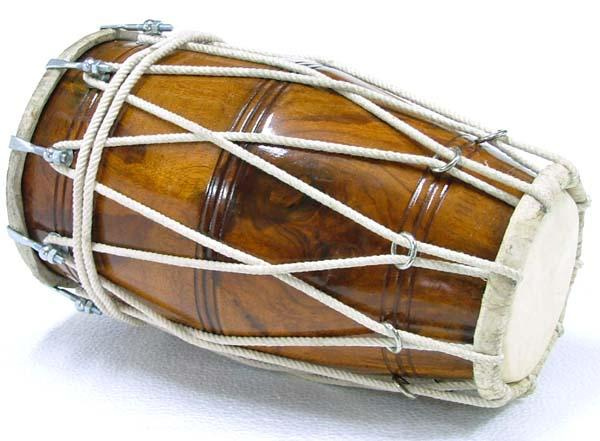 This first chorus is fifteen measures long and features the wonderfully delivered single-tracked vocal by George while the dholak and tabla keep the beat in half-time. The harmonium and surbahar hang back in the mix to create a low toned pad which works nicely for the chord changes. A shehnai is playing a finely-crafted counter melody throughout the chorus while a sitar plays a quick melodic phrase in measures two, four, six and eight to fill in the gaps left from the vocalist. Measures thirteen through fifteen see the return of the tar shehnai playing in virtual unison to George's sung melody line which then brings the chorus to its conclusion. This first chorus is fifteen measures long and features the wonderfully delivered single-tracked vocal by George while the dholak and tabla keep the beat in half-time. The harmonium and surbahar hang back in the mix to create a low toned pad which works nicely for the chord changes. A shehnai is playing a finely-crafted counter melody throughout the chorus while a sitar plays a quick melodic phrase in measures two, four, six and eight to fill in the gaps left from the vocalist. Measures thirteen through fifteen see the return of the tar shehnai playing in virtual unison to George's sung melody line which then brings the chorus to its conclusion.
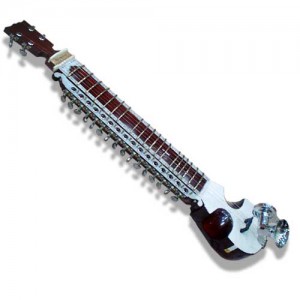 The second instrumental verse is nearly identical to the first except for the inverted order of the melody lines played by the lead instruments. First to occur this time, in measures one and two, is the sitar, while the tar shehnai appears in measures three and four followed by the sitar again in measures five and six only to play in unison again for the remaining measures. This verse is followed by the second chorus which is also nearly identical to the first, the only noticeable difference being the slight lyrical change from being about George's personal experience to one we can have personally, a shift being made in the lyrics from the first to second person. For instance, “Without going out of your door,” instead of “my door” from the first chorus, and so on. The second instrumental verse is nearly identical to the first except for the inverted order of the melody lines played by the lead instruments. First to occur this time, in measures one and two, is the sitar, while the tar shehnai appears in measures three and four followed by the sitar again in measures five and six only to play in unison again for the remaining measures. This verse is followed by the second chorus which is also nearly identical to the first, the only noticeable difference being the slight lyrical change from being about George's personal experience to one we can have personally, a shift being made in the lyrics from the first to second person. For instance, “Without going out of your door,” instead of “my door” from the first chorus, and so on.
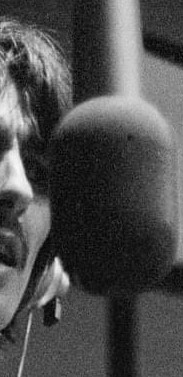 The third verse is similar instrumentally to the second verse but is different in that it features lead vocals from George in measures two, five and six, the line “arrive without traveling” in the second measure being double-tracked for added affect. George's lead vocals are joined with harmony vocals from John and Paul in the sixth measure on the line “do all without doing.” Another notable difference this time around is two added measures at the end of the song, making it a twelve measure verse. Measures nine through twelve feature the final three notes of the tar shehnai melody line being repeated three times and then allowing the final note to fade out with the droning harmonium. The third verse is similar instrumentally to the second verse but is different in that it features lead vocals from George in measures two, five and six, the line “arrive without traveling” in the second measure being double-tracked for added affect. George's lead vocals are joined with harmony vocals from John and Paul in the sixth measure on the line “do all without doing.” Another notable difference this time around is two added measures at the end of the song, making it a twelve measure verse. Measures nine through twelve feature the final three notes of the tar shehnai melody line being repeated three times and then allowing the final note to fade out with the droning harmonium.
American Releases
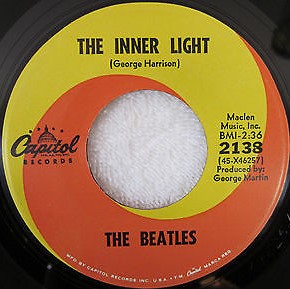 On March 18th, 1968, "The Inner Light" was released as the b-side to their hit single "Lady Madonna," which was their last original Capitol single, the follow-up "Hey Jude" being the first released on their own new "Apple" label. While the a-side was the obvious choice for radio airplay, "The Inner Light" did get attention enough to make a slight dent on the Billboard Hot 100 at #96. On March 18th, 1968, "The Inner Light" was released as the b-side to their hit single "Lady Madonna," which was their last original Capitol single, the follow-up "Hey Jude" being the first released on their own new "Apple" label. While the a-side was the obvious choice for radio airplay, "The Inner Light" did get attention enough to make a slight dent on the Billboard Hot 100 at #96.
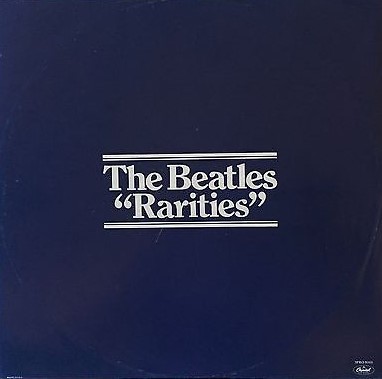 Because of EMI's decision to release a box set that included all of the British Beatles albums as well as an additional album entitled "Rarities" that included songs that did not appear on any British Beatles album, Capitol had initially decided to release this album in America. 2,000 promotional copies of this album were manufactured (#SPRO-8969) and then another unlimited number of advance copies (ESN-SN-12009) were printed in the fall of 1979. "The Inner Light" was included on this proposed album which was decided to be abondoned due to the fact that most of the songs contained therein were available on other Beatles albums in the US at the time. These promotional albums are very collectible today. Because of EMI's decision to release a box set that included all of the British Beatles albums as well as an additional album entitled "Rarities" that included songs that did not appear on any British Beatles album, Capitol had initially decided to release this album in America. 2,000 promotional copies of this album were manufactured (#SPRO-8969) and then another unlimited number of advance copies (ESN-SN-12009) were printed in the fall of 1979. "The Inner Light" was included on this proposed album which was decided to be abondoned due to the fact that most of the songs contained therein were available on other Beatles albums in the US at the time. These promotional albums are very collectible today.
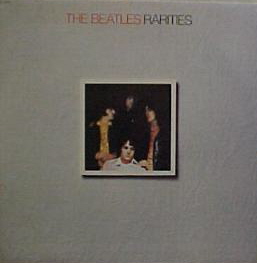 The first appearance of the song on an album in the US was on the Capitol US version of “Rarities,” which was released on March 24th, 1980. The aforementioned stereo mix, although already in existence for over ten years, was not unearthed as of yet, so the already released mono mix from the single appears here. The first appearance of the song on an album in the US was on the Capitol US version of “Rarities,” which was released on March 24th, 1980. The aforementioned stereo mix, although already in existence for over ten years, was not unearthed as of yet, so the already released mono mix from the single appears here.
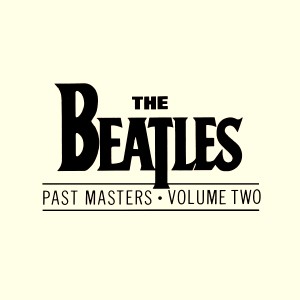 The first time the stereo mix of “The Inner Light” was released in the US was on the compact disc “Past Masters – Volume Two,” released on March 7th, 1988. For its vinyl release on October 24th, 1988, it was decided to combine both "Past Masters" volumes to form a double-album. This double-album concept was adopted for both of the remastered editions, the 2-CD set being released on September 9th, 2009 and the vinyl double-album coming out on November 12th, 2012. The stereo version of the song was also released on a bonus disc in the box set “Compact Disc EP Collection,” which was released on June 30th, 1992. Also on September 9th, 2009, the original mono mix was included in the CD box set “The Beatles In Mono” on a disc entitled "Mono Masters," the vinyl edition of this box set being first released on September 9th, 2014. The first time the stereo mix of “The Inner Light” was released in the US was on the compact disc “Past Masters – Volume Two,” released on March 7th, 1988. For its vinyl release on October 24th, 1988, it was decided to combine both "Past Masters" volumes to form a double-album. This double-album concept was adopted for both of the remastered editions, the 2-CD set being released on September 9th, 2009 and the vinyl double-album coming out on November 12th, 2012. The stereo version of the song was also released on a bonus disc in the box set “Compact Disc EP Collection,” which was released on June 30th, 1992. Also on September 9th, 2009, the original mono mix was included in the CD box set “The Beatles In Mono” on a disc entitled "Mono Masters," the vinyl edition of this box set being first released on September 9th, 2014.
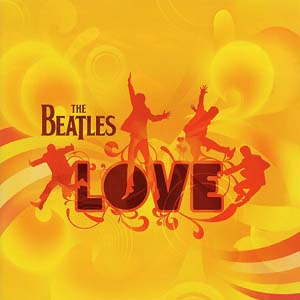 Not to be forgotten is the November 20th, 2006 released compilation album “Love,” which features a small segment of the song on the track entitled “Here Comes The Sun (with 'The Inner Light' transition).” Also, as outlined above, an original instrumental take of “The Inner Light” as recorded in Bombay, India on January 12th, 1968 is included on the remastered re-release of George Harrison's “Wonderwall Music” album. Not to be forgotten is the November 20th, 2006 released compilation album “Love,” which features a small segment of the song on the track entitled “Here Comes The Sun (with 'The Inner Light' transition).” Also, as outlined above, an original instrumental take of “The Inner Light” as recorded in Bombay, India on January 12th, 1968 is included on the remastered re-release of George Harrison's “Wonderwall Music” album.
On November 9th, 2018, the "'White Album' 50th Anniversary Super Deluxe Box Set" was released which featured the above described instrumental "take six" of "The Inner Light."
Live Performances
Neither George nor The Beatles ever performed the song live, however many will call to mind the excellent version performed by Anoushka Shankar (Ravi Rhankar's daughter), Jeff Lynne and others at the “Concert For George” at The Royal Albert Hall in London on November 29th, 2002.
Conclusion
 The unfortunate truth of the matter is that "The Inner Light" is one of the most overlooked and under-appreciated songs in The Beatles catalog. As a b-side that never made it onto either an official British or American album during their career, and as the third of three George Harrison compositions recorded predominantly with Indian instrumentation, a substantial amount of today's Beatles fans are unaware even of its existence. The unfortunate truth of the matter is that "The Inner Light" is one of the most overlooked and under-appreciated songs in The Beatles catalog. As a b-side that never made it onto either an official British or American album during their career, and as the third of three George Harrison compositions recorded predominantly with Indian instrumentation, a substantial amount of today's Beatles fans are unaware even of its existence.
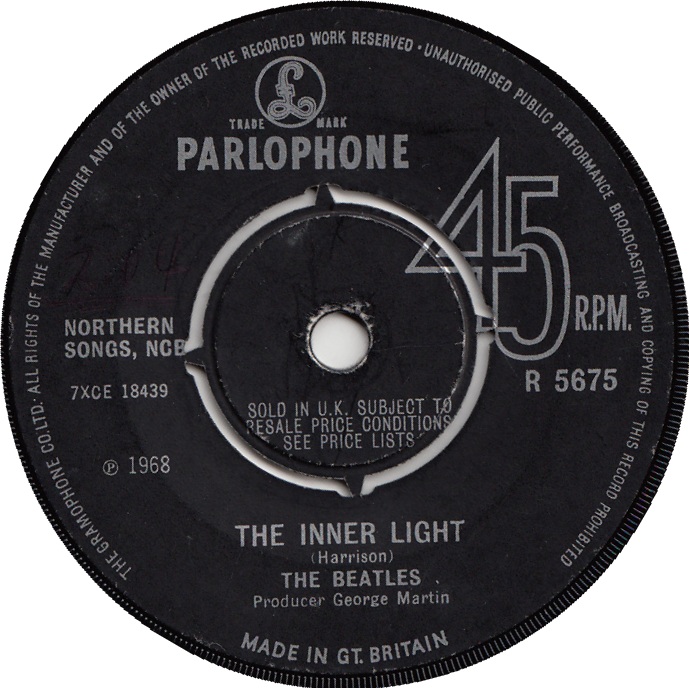 However, the fact that “The Inner Light” beat out two other strong and well respected John Lennon compositions, namely, “Across The Universe” and “Hey Bulldog,” to earn its place as the first George Harrison composition to grace the coveted b-side position on an officially released British Beatles single, is worthy of our consideration and respect. Paul McCartney himself had a high opinion of the song shortly after its release, describing it as “an unusual composition and one of the most commercial that George has ever written...Forget the Indian music and listen to the melody. Don't you think it's a beautiful melody? It's really lovely.” However, the fact that “The Inner Light” beat out two other strong and well respected John Lennon compositions, namely, “Across The Universe” and “Hey Bulldog,” to earn its place as the first George Harrison composition to grace the coveted b-side position on an officially released British Beatles single, is worthy of our consideration and respect. Paul McCartney himself had a high opinion of the song shortly after its release, describing it as “an unusual composition and one of the most commercial that George has ever written...Forget the Indian music and listen to the melody. Don't you think it's a beautiful melody? It's really lovely.”
Song Summary
“The Inner Light”
Written by: George Harrison
- Song Written: November 1967 – January 12, 1968
- Song Recorded: January 12, February 6 and 8, 1968
- First US Release Date: March 18, 1968
- US Single Release: Capitol #2138 (b-side to “Lady Madonna”)
- Highest Chart Position: #96
- First US Album Release: Capitol #SHAL-12060 “Rarities”
- British Album Release: Parlophone #PSLP-261 “Rarities”
- Length: 2:36
- Key: E-flat major
- Producer: George Harrison, George Martin
- Engineers: J.P Sen, S.N. Gupta, Geoff Emerick, Jerry Boys, Ken Scott, Richard Lush
Instrumentation (most likely):
- George Harrison - Lead Vocals
- Paul McCartney - Backing vocals
- John Lennon - Backing vocals
- Ashish Khan - sarod
- Mahapurush Misra - tabla, pakhavaj
- Chandra Shakher - surbahar
- Shiv Kumar Sharmar - santur
- S.R. Kenkare - shehnai
- Vinayak Vohra - tar shehnai
- Rijram Desad - dholak, harmonium
- Indril Bhattacharya - sitar
Written and compiled by Dave Rybaczewski
|
IF YOU WOULD LIKE TO MAKE A DONATION TO KEEP THIS WEBSITE UP AND RUNNING, PLEASE CLICK BELOW!
Sign Up Below for our MONTHLY BEATLES TRIVIA QUIZ!
|